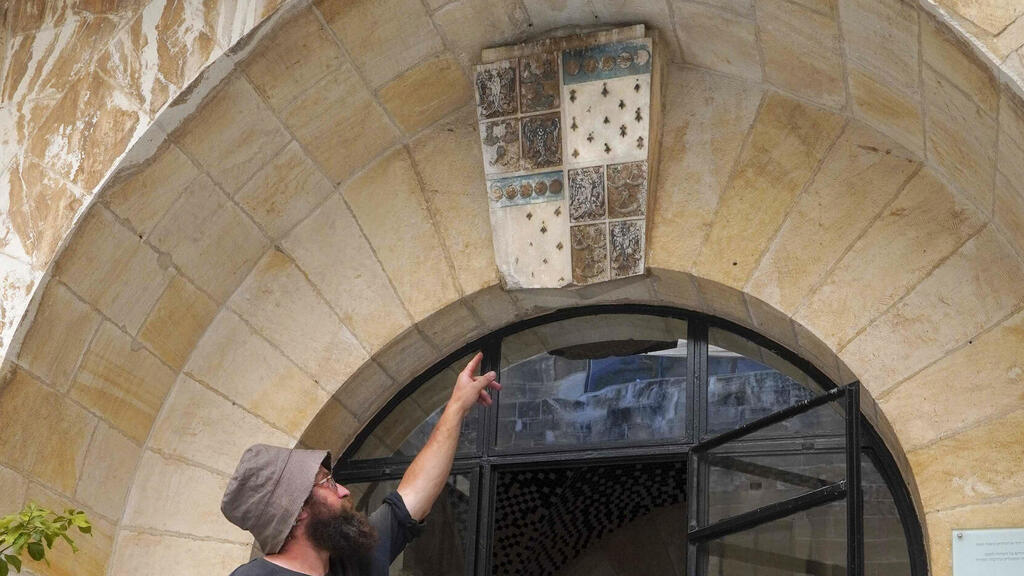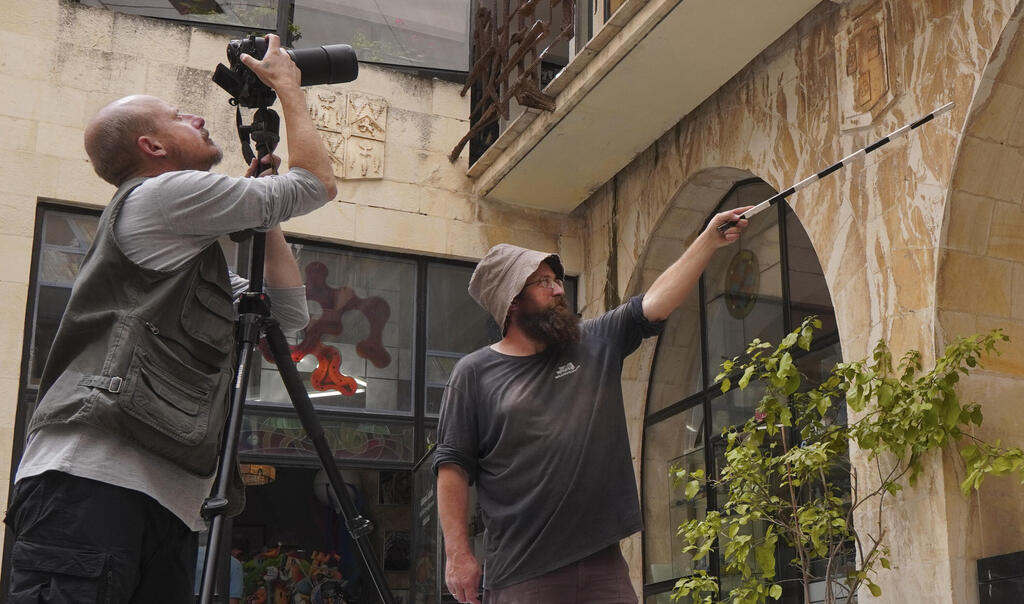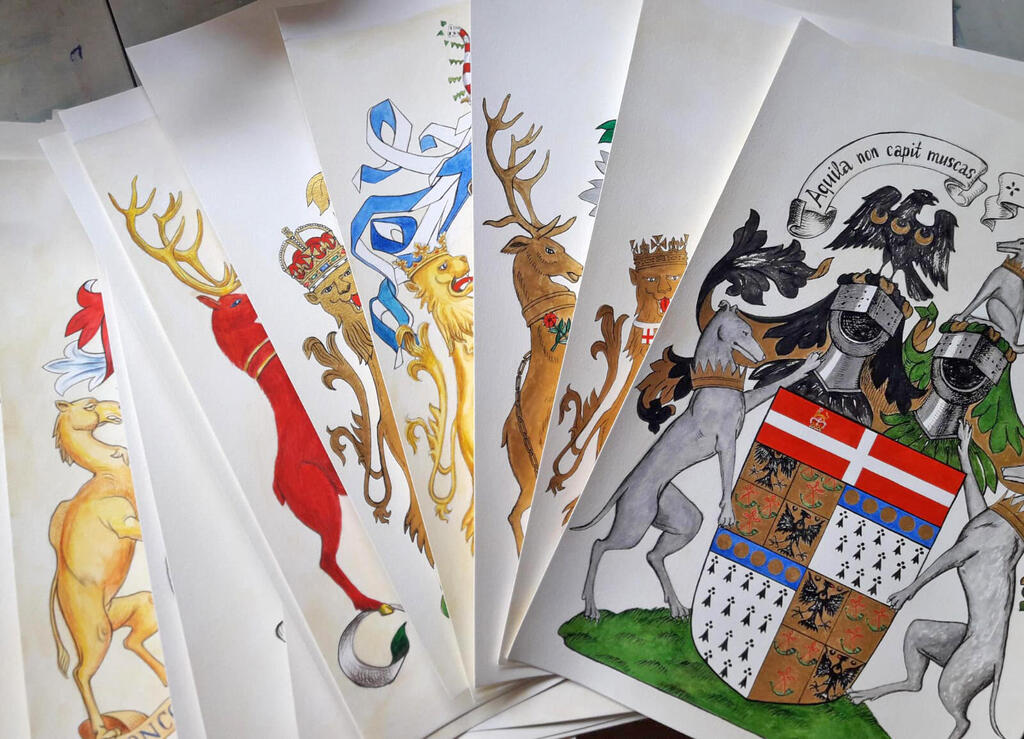The symbols of King George V and Irish beer maker Edward Cecil Guinness have been discovered on the walls of a hospital that operated in Jerusalem over 100 years ago.
The symbols were uncovered during research conducted by Shai Halevi and Michael Tchernin of the Israel Antiquities Authority, who mapped and deciphered forgotten British symbols at the site. According to the Antiquities Authority, these symbols served as a kind of "graphic identity card" for the noble families who contributed to the building’s expansion.
The symbols were found in one of the first hospitals established in Jerusalem. This magnificent building, constructed for the hospital, is located on the edge of the Hinnom Valley, facing Mount Zion, not far from the Old City walls. Over the years, it was converted into the "Jerusalem House of Quality," a center for art and exhibitions, and also into a hotel.
The Antiquities Authority stated that the English Hospital for Eye Diseases was founded in 1882 by the English branch of the Order of St. John of Jerusalem, which saw itself as the successor to the Hospitaller Order from the Crusader period. The hospital, unique at the time, played a central role in treating eye diseases prevalent in the Land of Israel and Jerusalem, serving patients from across the Middle East. It provided free treatment to all in need. During the British Mandate, the hospital complex was significantly expanded, with a new wing added on the other side of Hebron Road.
This expansion was made possible by generous donations from British nobles and businessmen, many of whom were members of the Order of St. John. In recognition of their contributions, the walls of the hospital complex were adorned with dozens of symbols representing each donor family.
The building experienced many changes during World War I and the War of Independence, with evidence of these events found in various parts of the complex. Over the decades, the site’s purpose evolved: the eastern part now forms part of the Mount Zion Hotel, while the western part serves as the Jerusalem House of Quality, an artists' house.
Over time, the affiliation and identity of the noble symbols decorating the building's walls faded from public memory, with some even being defaced or destroyed. Recently, Shai Halevi, a photographer, and Michael Tchernin, an archaeologist from the Israel Antiquities Authority, managed to decipher the remaining symbols. They were joined by artist Anastasia Prokofieva.
The researchers successfully identified 18 out of 23 symbols at the site, belonging to key figures in British history. Among the symbols are those of King George V (reigned 1910-1936), famous Irish beer maker Edward Cecil Guinness (1847-1927), skyscraper architect Alfred Bossom (1881-1965), and shipbuilder Henry Grayson (1865-1951).
The Antiquities Authority also noted the presence of a symbol of the British-Jewish noble Edward de Stern (1854-1933), the uncle of British-Jewish philanthropist Vera Salomons, founder of the Museum for Islamic Art in Jerusalem.
The archaeologists also discovered a stone with a mysterious inscription at the foot of the hospital in the Hinnom Valley. It turned out to be the cornerstone of the hospital. "For us, archaeology does not stop at ancient times; these are relatively modern finds, but among our tasks, we are already investigating what will be considered archaeology in the future," said Dr. Ram.
Israel Antiquities Authority Director Eli Eskozido concluded, "Every stone in Jerusalem tells a story. Our researchers literally turn every stone to uncover the fascinating history of Jerusalem in all its diversity and cultures.
The results of the research by the Israel Antiquities Authority, including photographs of the symbols, artistic color reconstructions of each, and biographical information related to their owners, along with new archaeological findings from the site and additional discoveries, will be displayed from June 20 to July 2 at the Jerusalem House of Quality. The exhibition will be open to the public free of charge.





